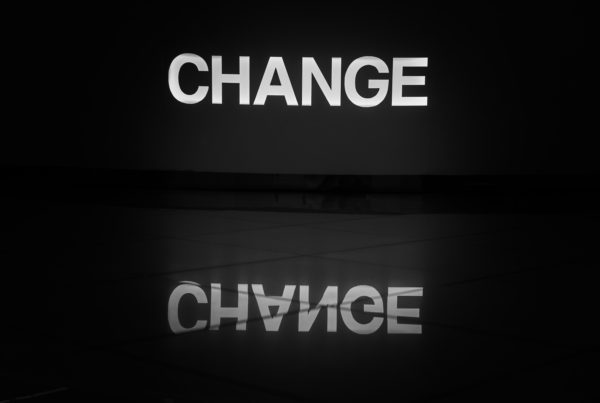In a pre-Pandemic world, if I were to have asked a procurement officer or a chief financial officer, “what do you hope to accomplish with procurement?” the answer would have been straightforward: cost savings. In a post-Pandemic world with an elevated and persistent interest in social justice, the response is likely to be fundamentally different.
Strategy is defined in the dictionary as “a plan, method, or series of maneuvers or stratagems for obtaining a specific goal or result.” Before the Covid-19 crisis, many thought of the world as deterministic. While there might be volatility or uncertainty in financial instruments leading to crises like the Global Financial Crisis, this was perceived to be separate from low levels of real volatility. Globalization increased monotonically, technology evolved, and the world seemed to have converged on profit-maximizing corporatism. The only shocks to the system came from contained natural disasters like tsunamis or earthquakes or floods. Even climate change was deemed to move in one direction.
In a regime in which volatility seemed limited or, at least, something the firm could hedge with the right insurance coverage, and one in which companies did not have any acknowledged responsibility to stakeholders other than their shareholders, then the target for strategy was simple: lower costs.
It is a cliché that the first place anyone seems to turn for cost savings is procurement. You see this in merger announcement press releases, in restructuring plans, , and in regular corporate presentations to investors. Companies announce that they will obtain procurement cost savings from vendor rationalization, the elimination of duplication, or even digital transformation.
In practice what did this mean for procurement?
It meant outsourcing much of a company’s supply chain so that only the final stages of value addition were performed domestically and internally. In the limit, companies would outsource research, development, and production, retaining only distribution.
It meant concentration of purchasing with a single vendor (or a small number of vendors) to obtain discounts driven by scale.
It meant offshoring to countries where the wage gap with the developed world had not yet closed.
It meant that the corporation ignored issues of social importance, like race and inequality. Milton Friedman’s dogma on social responsibility prevailed:
“… there is one and only social responsibility of business — to use its resources and engage in activities designed to increase its profits so long as it stays within the rules of the game, which is to say, engages in open and free competition without deception or fraud.”
As Warren Buffett is reputed to have said, “Only when the tide goes out do you discover who’s been swimming naked.”
Companies who focused on cost-minimization exclusively or primarily were self-insuring against risks they did not perceive, confident that all of their competitors were doing the same thing.
When the Pandemic lock-downs started to bite in the Spring of 2020, it was clear that the world was not deterministic. Economic losses due to lost revenue and higher costs started to roll in with the concurrent realization of multiple risks.
By outsourcing their supply chains, companies discovered that they lacked visibility into who was providing them with what. They definitely knew who their prime contractor was. They might know from whom their prime contractor sourced his inputs. But they almost certainly did not know who these sub-contractors sourced from and so on and so forth. This was critical because the points of failure were more likely to be located deeper in their supply chains. Without the ability to identify these vulnerable third-tier (and beyond) suppliers, it was even more difficult to mitigate risk ex post facto.
In concentrating purchases with a single vendor, buyers found that they had foregone the benefits of diversification for marginally cheaper unit pricing.
Many procurement teams found that they had weak relationships with alternative suppliers. Solvent alternative suppliers began to allocate limited capacity with an explicit preference for customers who had supported them before the Pandemic. The higher pricing that the ex-ante cost minimizers were forced to pay to access capacity ex-post ate into the accumulated profits from the pre-crisis salad days. After all, those prior savings were like the insurance premiums they had avoided paying for not purchasing the hedges that would have smoothed their results in the crisis times.
The Pandemic’s effects were not restricted to health and productive capacity; they also sparked geopolitical tensions as rivalries erupted in competition for positioning and resources. For those who had sourced from countries in the developing markets, they risked having their access to products they needed desperately limited, diverted, or delayed.
The effects of the lockdown combined with a series of tragic events to provoke a re-examination of the corporate social contract. Companies had to ask themselves, what were they doing to promote diversity and inclusion?
Naturally, the principal focus here was on hiring and internal advancement. But buyers have an even greater ability to empower diverse suppliers with contracts that help these typically smaller companies develop capacity, capabilities, and relationships necessary for sustainable wealth generation. How would perceptions about corporate behavior affect brand and, ultimately, revenue?
The lessons of the Pandemic are that strategy at the firmwide level is about managing the risk profile to maximize the upside and minimize the downside subject to resource constraints and that sourcing is an integral part of this strategic management of risk.
Most companies are (or should be) preparing Board-level discussions of how to revamp their approach to supply chain risk. Expect these to be discussed and debated intensely later this year and early next year now that we are through the most reactive phase of the crisis.
The first thing they need to do is to spell out the different dimensions of sourcing risk that they face with procurement. Here are just a few that could affect the value of the firm.
- Price: Have they obtained the best price?
- Supplier Concentration: Have they diversified and limited their exposure to individual suppliers?
- Geographic Concentration: Have they diversified and limited their exposure to individual countries?
- Subcontractor: Do they have visibility into the supply chain and have they taken steps to mitigate the risk associated with subcontractor suppliers?
- Inventory: Do they maintain adequate inventories for a variety of scenarios?
- Supplier Relationships: Do they have strong relationships with the best suppliers?
- Market Intelligence: Do they have access to real-time intelligence about potential supply chain shocks in their markets and sourcing locations?
- Revenue and Brand: How does the firm’s engagement with diverse suppliers affect its revenue? Is membership in supplier and diversity organizations sufficient, or will companies need to increase their direct engagement with these suppliers materially?
These risks (and potentially other risks specific to the individual buyer firm) bear upon the kind of technology solution the procurement department requires.
One solution is unlikely to span all these dimensions comprehensively. Firms need to have a procurement technology stack, combining several solutions each of which addresses a subset of the overall risks.
To date, digitization in these tools has preserved the antecedent analog business process with its one-buyer-to-many-suppliers transactional orientation. These software solutions were more about executing a simple process. They were not built to manage risk.
In planning digitization as part of the strategic re-engineering, Boards should think about ways in which they can get the information they need, when they need it.
This doesn’t have to mean pulling out the plumbing and starting from scratch. That’s a straw-man argument in favor of the status quo that becomes less feasible every month the world is mired in this new normal.
The ideal solution is going to have features from financial markets risk management software. That’s why we built EdgeworthBox. It’s a layer that sits in the procurement technology stack to augment the existing approach. Whether you’re using email and spreadsheets or you’re using a cutting-edge cloud-based source-to-pay functionality, EdgeworthBox can help you access market intelligence and a community of other users the same way that financial market participants do using structured data and communities. And we do it all while making things simpler, fairer, and faster for suppliers so that more of them want to engage with buyers, creating more options. Check out this video. Give us a shout. We’d love to talk to you about procurement.




